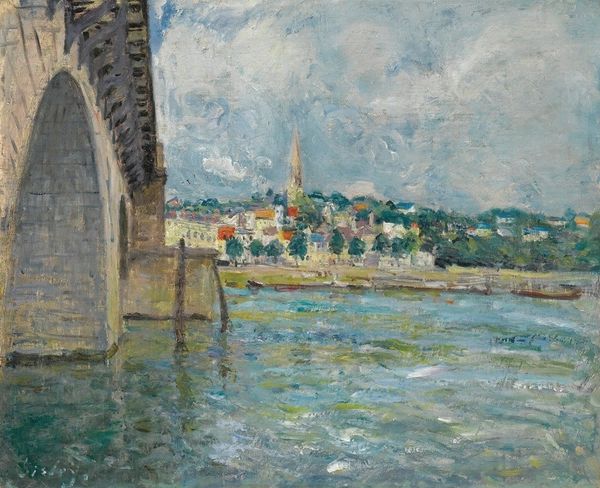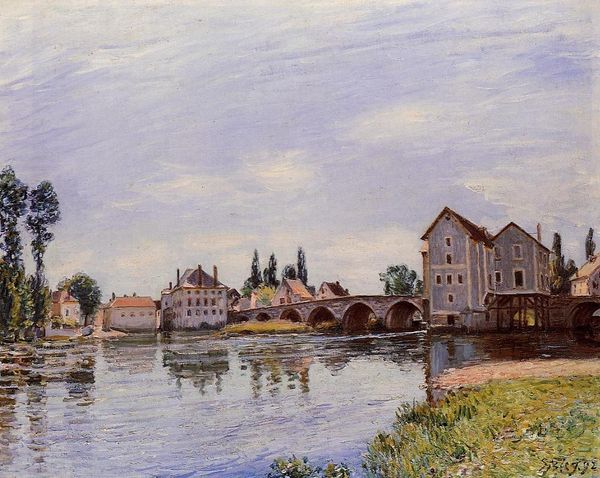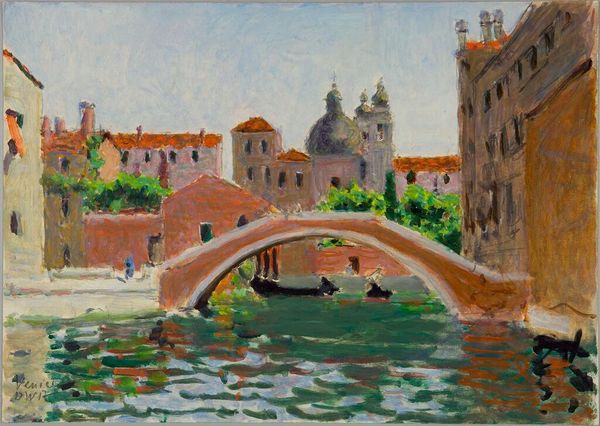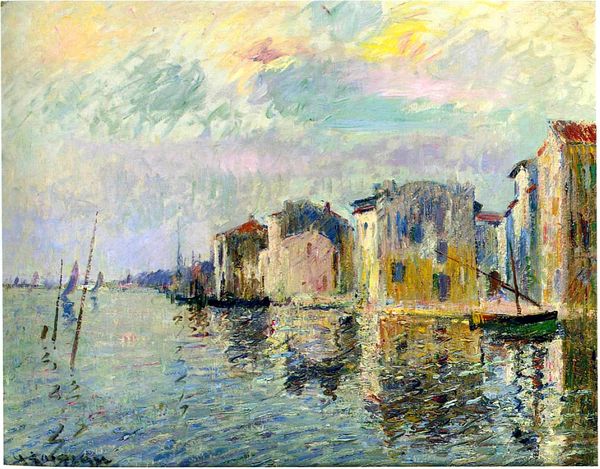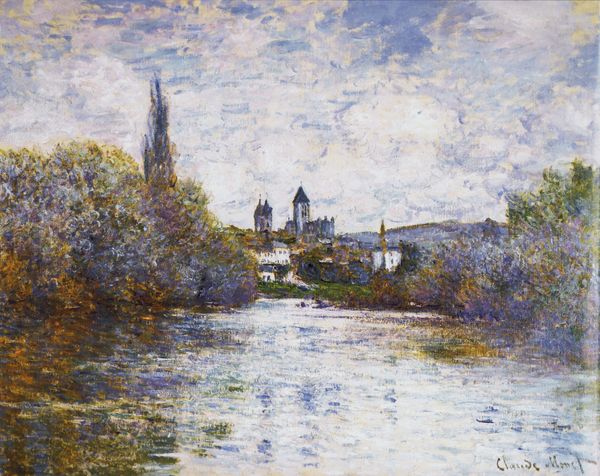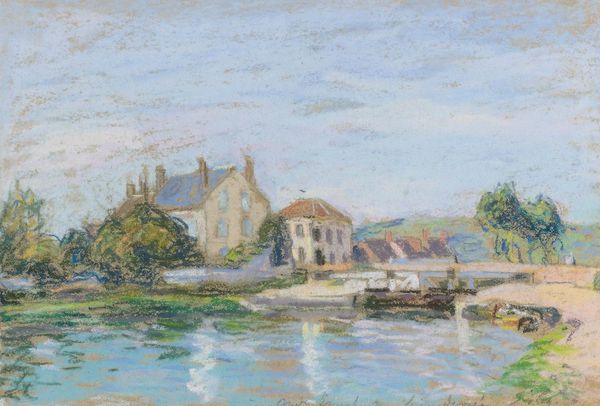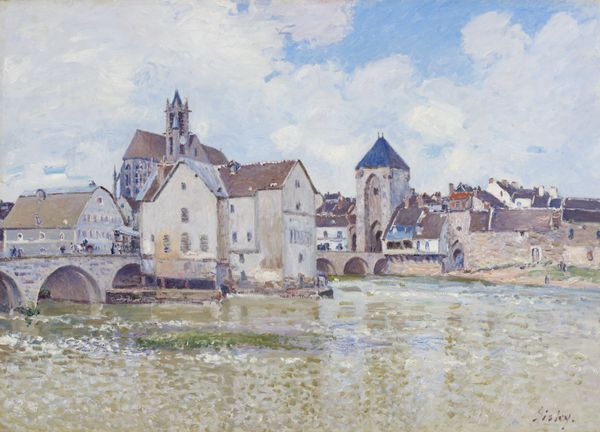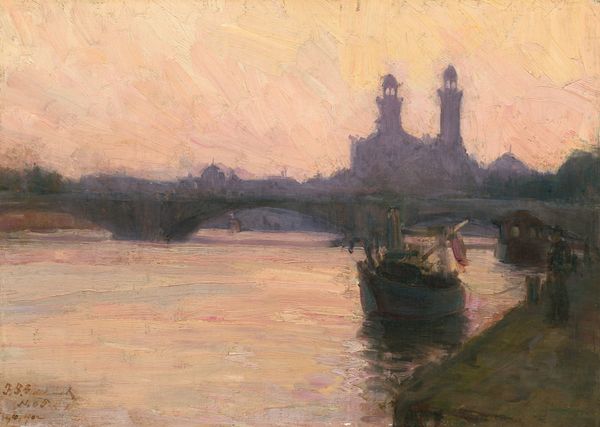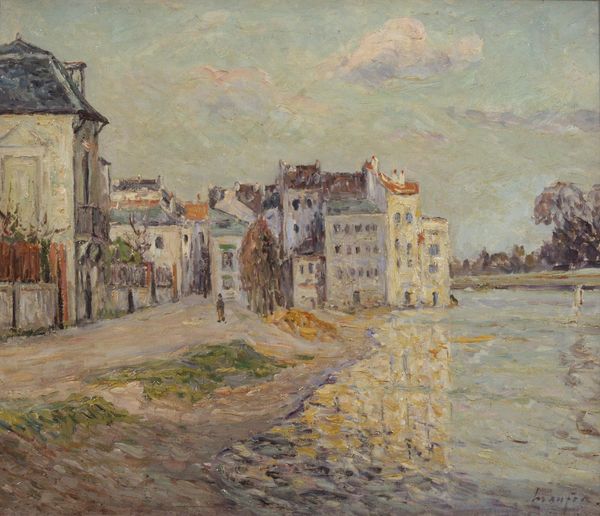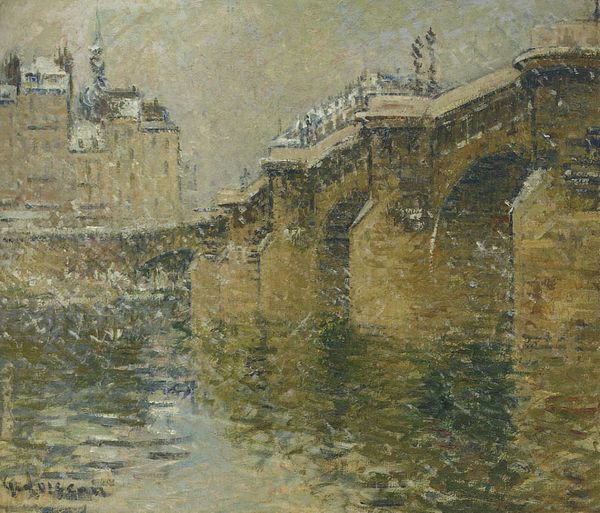
Dimensions: 60 x 75 cm
Copyright: Public domain
Curator: Look at the gorgeous "The Bridge at Moret at Sunset" by Alfred Sisley, completed in 1892 using oil paint, as many Impressionist pieces were. There's a dreamy quality about it. Editor: Yes, those blues and violets immediately give me a melancholy feel, and I notice the thick application of the paint on the water’s surface creating visual texture. The sky seems heavy. What’s the historical story? Curator: Sisley's position within Impressionism is quite fascinating; often somewhat overshadowed, but his dedication to landscape and his Anglo-French identity positioned him uniquely. He explored ideas of belonging and observation that are crucial to understanding his approach to rendering place and time. I think about it in the context of displacement, his commitment to observing changing conditions feels especially pointed. Editor: And those changing conditions speak to the industrialization of the time. I’m looking at the materials themselves: the canvas, the processed oil paints—these were commodities circulating in a rapidly changing world. The brushstrokes, too, reflect the speed and rhythms of modern life. We must also acknowledge that pigments were being artificially created through the labor of chemical processing, changing art forever. Curator: Exactly. Consider that Sisley returned to Moret repeatedly. These depictions weren't just about capturing a scene; they're studies of place and memory. Also, consider his position of being caught between nations: born in Paris but of British parentage. Editor: He transforms it, literally, by painting it through his eyes and experiences with material conditions informing his view. The commodification of art, though, gave many artists the opportunities that otherwise wouldn't exist. The bridge becomes not just a scene, but also an element of labor and of transformation itself! Curator: And as a social space—a point of transit but also of encounter—the bridge facilitates human exchange in a budding era of globalization. This piece invites us to look deeper into our relationship to the environment and our place within it, which, regardless of our backgrounds, are pertinent for conversations today. Editor: Well put. Sisley's commitment to capturing ephemeral conditions through labor offers us the chance to connect past processes and present issues, but more importantly, it reminds us to consider materials. Curator: Agreed; an enriching convergence of thought, indeed.
Comments
No comments
Be the first to comment and join the conversation on the ultimate creative platform.



